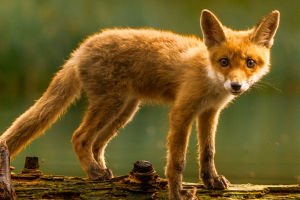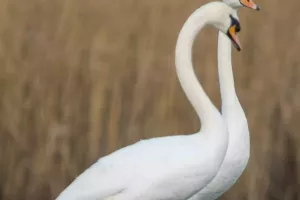As a precious bird in the world, the red-crowned crane is an indicator organism that is extremely sensitive to changes in the wetland environment, with only about 2,000 remaining in the world.
Red-crowned cranes are distributed in China, Japan, North Korea, South Korea, Overwintering in China, Japan, North Korea and South Korea, China's Heilongjiang, Ussuri River basin and Japan's Hokkaido.
With a long mouth, long neck, long legs, white body and bright red crown, this is the familiar red-crowned crane. The red-crowned crane is 1.2-1.5 meters long. The male is slightly larger than the female. There is a broad gray-black stripe on each side of the neck, a small white feather on the ear feathers, and the iris is dark brown. The forehead and top of the head are bare and vermilion red. The bill is yellowish-green and the tail is short with white feathers. Legs and feet are lead black. Young red-crowned cranes are light tan-yellow, but the tips of the primary flight feathers are black, and the neck and secondary flight feathers are dark brown or gray.
Red-crowned cranes are the main species in wetland ecosystems. In breeding grounds, red-crowned cranes generally choose reed swamps and sedge low swamps with perennial water accumulation, as well as swampy meadows with seasonal water accumulation, and mostly build their nests in reed swamps. In wintering grounds, the habitat types of red-crowned cranes include tidal flats, rice fields and reed marshes.
Red-crowned cranes have a wide range of diets, such as insects, fish, shrimp, crabs, shellfish, snails, etc., and also include Suaeda salsa seeds, Cyperaceae seeds and plant rhizomes. Sometimes they go to farmland to eat seeds and seedlings, which vary according to the season.
Every year at the end of February and the beginning of March, wild red-crowned cranes move out of their wintering grounds and fly to their breeding grounds. In early October, red-crowned cranes gather in small groups to leave the breeding grounds and move to the wintering grounds. Red-crowned cranes often live in pairs or in families and small groups. During the migration season and winter, dozens of families often cluster into larger groups. Sometimes there are as many as 40 to 50 or even hundreds of them in clusters, but they are still scattered into small groups or family groups in a certain area when they are active. At night, they mostly inhabit the shoals or reeds surrounded by water, and they are still scattered in family groups.
In recent years, due to the disorderly development of wetlands by humans, the habitat of red-crowned cranes has been destroyed, and its survival has been threatened. The population has dropped sharply, and has even become extinct in some places. At present, it has been included in the endangered level of the "IUCN Red List of Threatened Species", and many countries have gradually begun to take measures to protect the red-crowned crane.


